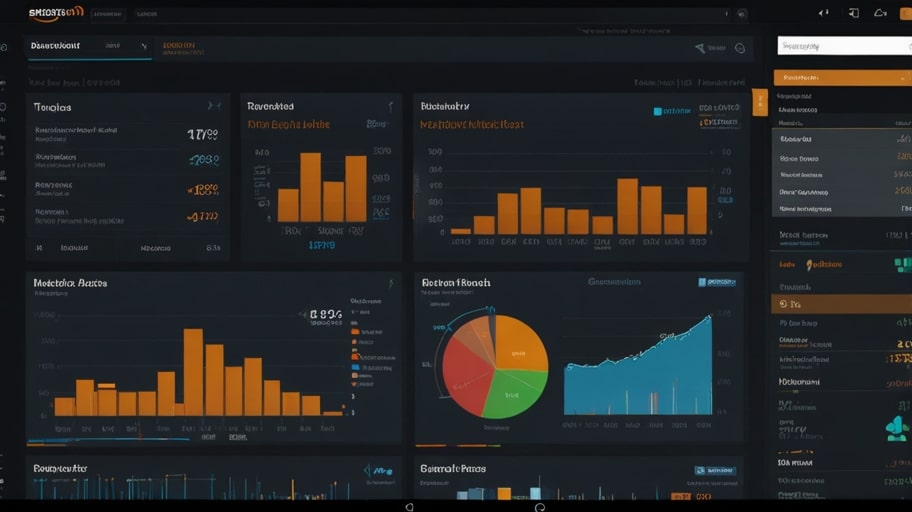Having started in 1975, Microsoft grew from being a software giant to a leader in cloud services. What was once about Windows and Office has now given way to the urge for innovation across sectors. The shift of Microsoft’s business focus to the cloud by Satya Nadella has certainly rewritten its global grip and identity.
Satya Nadella’s Transformative Vision
During his time as CEO from 2014, Nadella was able to change the direction that Microsoft was going. His focus on cloud, AI and inclusivity made the company come alive with new energy. With his human-centered style of leadership, Mr. Nadella has been able to do away with the stiffness that used to reign in the company by helping in forming partnerships and innovation. His acquisition strategies have contributed significantly to Microsoft’s status as a big tech company.
Azure The Cloud Cornerstone
Azure, which was unveiled in 2010, has been boosting the company’s growth ever since. Not only does it compete with AWS, but Azure also provides enterprises with a variety of cloud solutions. Their hybrid cloud platform makes it possible for companies to use the cloud, leading to a good customer response. The upsurge in revenue from Azure shows its dominance, although AWS is still a strong rival.
AI Integration and Innovation
AI drives Microsoft’s strategy all the way from intelligence in their products to the end result. Embedment of Copilot in Office and Windows contributes greatly to the enhancement of users’ productivity by delivering suggestions in real-time. Azure’s AI capacity was improved on the back of their partnership with OpenAI. A whole raft of essential ethical and policy matters surrounds Microsoft’s AI push, and therefore, they have to be very careful with their moves.
Gaming Expansion with Xbox
The gaming division of Microsoft is doing well with both Xbox and Game Pass. The acquisition of Activision Blizzard in 2022 has further strengthened its lineup with the likes of Call of Duty. The fact that the Xbox Game Pass Ultimate can be used for cloud gaming enables it to compete with Sony’s PlayStation. The government’s red tape and the risks when integrating new entities are looming challenges for Microsoft’s gaming strategy.
Financial Strength and Stability
Microsoft’s performance in financial terms is just great. Cloud revenue is the first source of the progress that the company is currently making. The cap of the market, which is frequently in the region of $3 trillion, speaks for the trust of investors. The profit from the cloud, software, and game sectors reduces the risks. These streams are helping the company to buffer the effects of the challenging economic conditions or the value changes of the currency. Nevertheless, Microsoft’s adaptability is always present in the face of such challenges.
Windows and Productivity Suite
Windows is known and used everywhere around the world and runs the machines of thousands of people. The productivity software package, which was known in the past as Office, is now called Microsoft 365, and it leads the market. Since the demand for cloud subscriptions is on the rise, the company is set to get the expected earnings. Furthermore, there is tough competition from Google Workspace, and free open-source solutions for online productivity tools that still exist. But the trust of some businesses in Microsoft has allowed it to be the top player in the field of AI, secure the company interaction, and enhance processes.
Cybersecurity Leadership
One of Microsoft’s protective wings is cybersecurity, and this concept of enterprise-wide has brought many good results. Defender and Sentinel are using superficial and deep machine learning in order to eliminate or prevent attacks from happening. In the 2021 SolarWinds hack, many security holes were found, so the companies responded by investing more money in security. According to new cyber threats, Microsoft adheres to trust, and with a simple and clear appearance in the market, they are so strong.
Sustainability Commitments
The company’s ultimate goal is to make the climate sink carbon negative by 2030. Azure’s growth is accompanied by the energy-efficient data centers that are operated by Microsoft and are environmentally friendly. The company outlines measures to conserve water and reduce waste. However, critics have their doubts about whether all of that is real; they really question its feasibility. The company’s transparency in ensuring that they are able to see the progress is a landmark in the industry.
Workforce Diversity
In his role as a leader, Satya Nadella champions diversity and originality among the company’s staff. The function of Microsoft’s hybrid work model, which was born amid the global health crisis, is that it provides staff with an opportunity to work both in a comfortable environment in their home and together with others at the same time. Balancing benefits from the product, above all, shields the company’s image from being tarnished. Previous HR harassment scandals are still under discussion, but existing changes are all focused on honest communication, and also the loyal staff who created the problems are now expected to remain through the change of behavior.
Global Reach and Competition
Microsoft is an organization with a presence in more than 190 countries, particularly in Asia and Europe, where it experienced enormous growth. Azure’s control has been contested by AWS and Google Cloud. The Chinese giant Alibaba Cloud is a major competitor in Asia. Microsoft’s global strategy, with potential data sovereignty law problems and geopolitical tensions, could be a major vector of business success or loss.
LinkedIn’s Professional Network
Since the 2016 acquisition, LinkedIn has been a natural fit for Microsoft’s product. It has not only become the enterprise eco-system of Microsoft but also a platform for both professional networking and job hiring. The user engagement has been notably boosted through the AI-powered tools integration. LinkedIn is being seriously challenged by Indeed and by the privacy issues, but its compatibility with Microsoft 365 underscores its strength.
Surface Hardware Ambitions
The Surface devices of Microsoft are intended for customers in the upper market segments. The laptops and tablets offered by the company have been a harmonious blend of Windows and productivity all the way. The Surface product family is recognized for its quality, yet it has somewhat lost the competitive consumer market to the MacBooks from Apple. Microsoft’s hardware department’s income was marginally affected by corporate adoption and the influx of flexible work solutions.
Regulatory and Antitrust Scrutiny
To mention a few are some of the regulatory challenges that Microsoft has to tackle all around the world. The focal point of the antitrust probes happening in the U.S. and the EU, is Microsoft’s leadership in cloud services and AI technologies. The Activision acquisition attracted a deluge of interventions. Microsoft is now very careful about compliance and lobbying, and the regulations and battles, including the 1990s browser wars, are well-learned.




